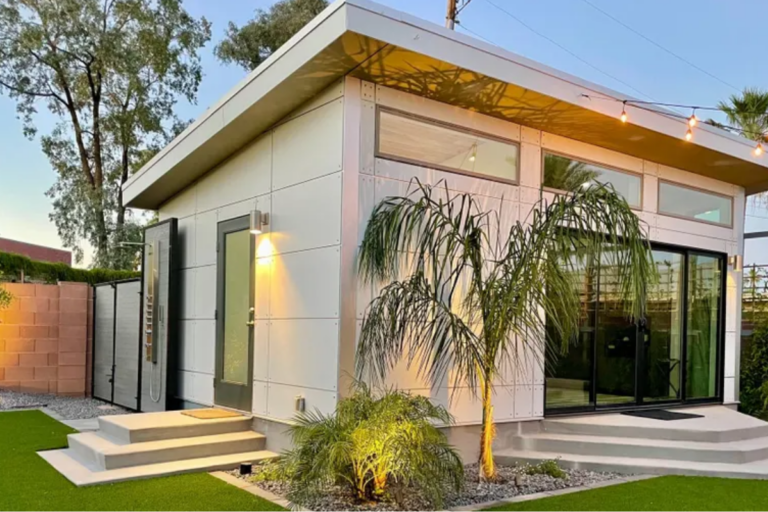Introduction to Tiny Houses
Tiny houses are an increasing trend in the housing market, offering a minimalist and eco-friendly lifestyle. These compacted homes are designed to maximize space while minimizing environmental impact.
Design Principles of Tiny Houses
Efficient Use of Space
Tiny houses are designed to make the most of every square foot. Multi-functional furniture, built-in storage, and clever design solutions help maximize space and create a comfortable living environment. The objective is to create a functional and efficient home without sacrificing comfort. For example, lofted sleeping areas free up floor space for living and dining, while built-in shelves and cabinets provide ample storage without additional space.
Sustainable Living
Sustainability is a crucial aspect of tiny house design. These homes often use eco-friendly materials, energy-efficient appliances, and renewable energy sources. It reduces their environmental impact and promotes a more sustainable lifestyle. Many tiny houses feature solar panels, composting toilets, and rainwater harvesting systems, reducing their reliance on non-renewable resources.
Mobility and Flexibility
Many small houses are built on trailers, allowing homeowners to move their homes as needed. This mobility offers a unique level of flexibility, making it possible to live in different locations without requiring a permanent foundation. It particularly appeals to those who enjoy travelling or want the freedom to relocate without the hassle of selling and buying property.
Benefits of Living in a Tiny House
Lower Costs
Tiny houses are typically more affordable than traditional homes. The reduced size and efficient use of space means lower construction costs, utility bills, and maintenance expenses. It makes tiny houses attractive for those looking to reduce their financial burden. Additionally, many tiny house owners can purchase their homes outright, eliminating the need for a mortgage and reducing financial stress.
Simplified Lifestyle
Living in a small house encourages a simplified lifestyle. With limited space, homeowners are encouraged to declutter and prioritize their belongings. It can lead to a more enjoyable way of living. The minimalist lifestyle promoted by tiny house living can reduce stress, increase happiness, and improve overall well-being.
Environmental Impact
Tiny houses have a smaller environmental footprint compared to traditional homes. Their reduced size means less material usage and lower energy consumption. It helps reduce greenhouse gas emissions and motivates sustainable living practices. Tiny houses minimize their environmental impact using eco-friendly materials and renewable energy sources.
Challenges of Living in a Tiny House
Limited Space
One of the main challenges of living in a tiny house is the limited space. Homeowners need to be creative with their storage solutions and be willing to live with fewer possessions. It can be a significant adjustment for those used to larger living spaces. Careful planning and organization are required to make the most available space and ensure the home remains comfortable and functional.
Zoning and Building Codes
Zoning and building codes can pose challenges for tiny house owners. Not all areas are tiny house-friendly, and finding suitable locations for these homes can be difficult. Researching local regulations before committing to a little house lifestyle is essential. Some areas may restrict where tiny houses can be placed, how long they can stay in one location, and what services they must be connected to.
Social Perception
Tiny houses are still a relatively new concept; not everyone is familiar with or accepts this lifestyle. Homeowners may face social stigma or misunderstandings about their choice to live in a tiny house. Educating friends, family, and neighbours about the benefits and practicality of tiny house living can help alleviate some of these concerns and foster a supportive community.
Conclusion
Tiny houses offer a unique and sustainable way of living. They maximize space, minimize environmental impact, and promote a simplified lifestyle. While there are challenges to living in a tiny house, the benefits can make it a rewarding choice for those looking to embrace a minimalist and eco-friendly lifestyle. By carefully planning and counting the specific needs and constraints of tiny house living, homeowners can create a comfortable, efficient, and environmentally responsible home.


